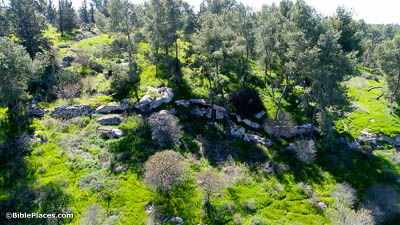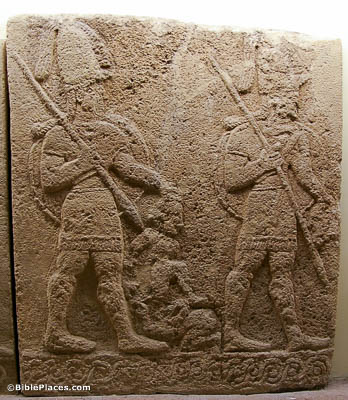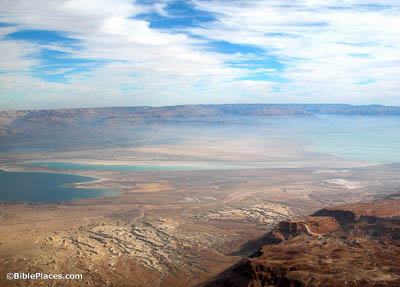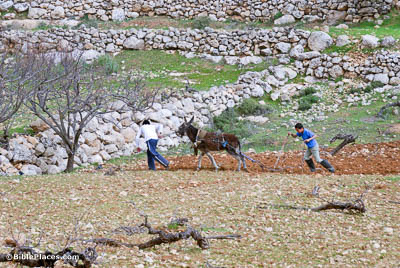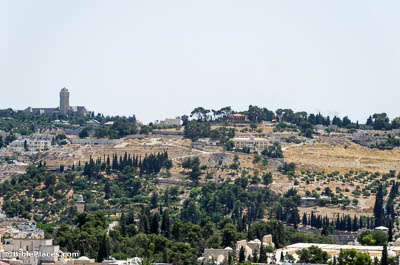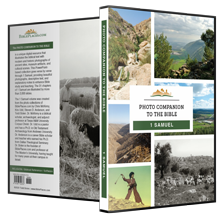David departed from there and escaped to the cave of Adullam (22:1).
Located about 16 miles (25 km) southwest of Jerusalem and 10 miles (16 km) east of Gath, Adullam is situated on the eastern end of the Elah Valley. The site seems to have been an ideal place of refuge at the time of David, in a “no man’s land” between Israelite and Philistine-controlled areas. Adullam is identified at Khirbet Tell Sheikh Madhkûr. The archaeological, toponymic, and geographic evidence make this identification quite strong.
